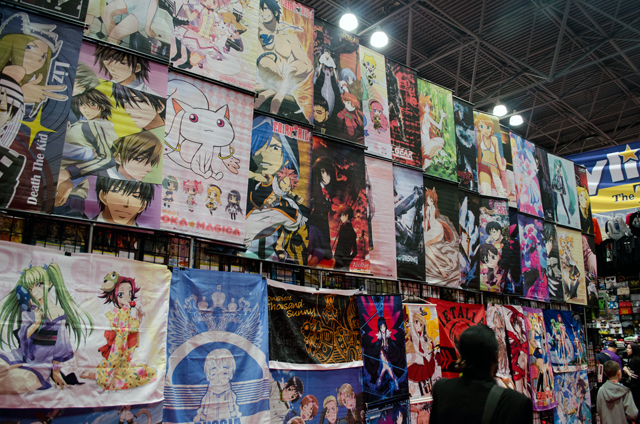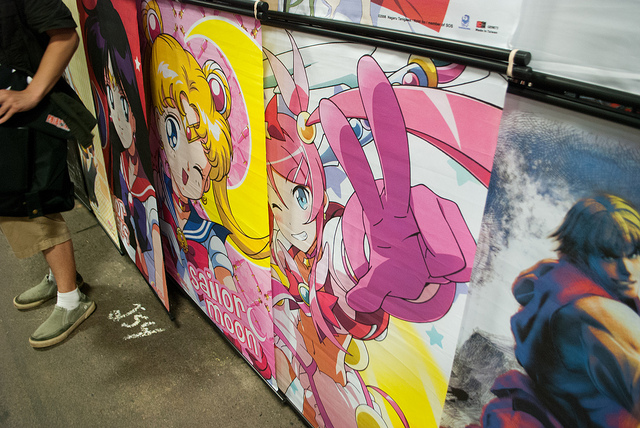If you’ve been an anime fan for a long time, it might not even occur to you how strange it is. While other fandoms hang posters, we have our pick of oversized fabric hangings, which leave fewer marks on the wall and can be rolled into flexible tubes when not in use.
Like many parts of Western anime fandom, wall scrolls are an import from Japan. We owe their prevalence at American anime conventions to Kent Hsu, the CEO of Great Eastern Entertainment. GE is one of the oldest—and remains the leading—manufacturer of licensed anime merchandise in the United States.
A lifelong fan, Hsu began selling anime merchandise in 1995 after his hopes of becoming a manga publisher fell through. Wall scrolls came a little later, in ‘97 or ‘98. Hsu first became aware of wall scrolls on a trip to Japan, though he said the ones he saw there were mostly photos of celebrities and musicians. He purchased one, and acquired a license to start manufacturing his own, with one big difference.
“In Asia, people often have smaller houses compared with Americans. Their wall scrolls are much smaller,” he told me. “To bring them to America, I made them twice the size.”
The “golden age” of wall scrolls was probably the late ‘90s, Hsu thinks. Back then GE had wall scrolls in 6,000 to 8,000 stores, including Tower Records and Spencer’s. Today, however, big box stores have dominated the commercial landscape. It’s much easier to sell posters to them, and even then, GE’s Avengers and Spiderman products outsell anime imagery.
“Posters can be viewed on a compact display rack before you buy, and they’re cheaper,” he said. “Wall scrolls are harder to display in stores, and cost more.”
For GE, wall scrolls are far less lucrative than posters—even when they have big-ticket licenses for shows like Naruto and Free!—because it’s aiming for sales in the millions to make manufacturing cheaper. Anime is a niche market, and wall scrolls are only a small part of GE’s business today. However, anime stores that buy GE’s products to sell online and at conventions see a better profit margin because they don’t have production costs.
Anime Corner is one such business. CEO and founder Bob Brown told in an email that he thinks wall scrolls sell well because they’re culturally relevant to anime, echoing the traditional kakejiku style of wall hangings in Japan. It’s a plus for him since wall scrolls are more expensive and better sellers than posters, so he can get his money’s worth.
“Scrolls carry a higher unit margin that posters and thus are more attractive to niche producers due to their higher profitability,” Brown said. “They work better in our market.”
In the market to buy a wall scroll yourself? Brown recommends visiting a convention or a retail shop in order to avoid additional fees.
“Scrolls are one of the few anime items that have higher unit volumes at cons and in retail shops than online because of the shipping problems and cost,” he said.
If you have a wall scroll lying around, check the lower righthand corner. Ten chances to one, you’ll see the letters GE and some numbers, followed by the inscription “Made in Taiwan.” (That’s the country where GE’s factories are located.) Even as wall scrolls have spread to hundreds of U.S. distributors, they all originate from one place: one man’s bet that people who prefer their media Asian would like their anime merchandise the same way.


